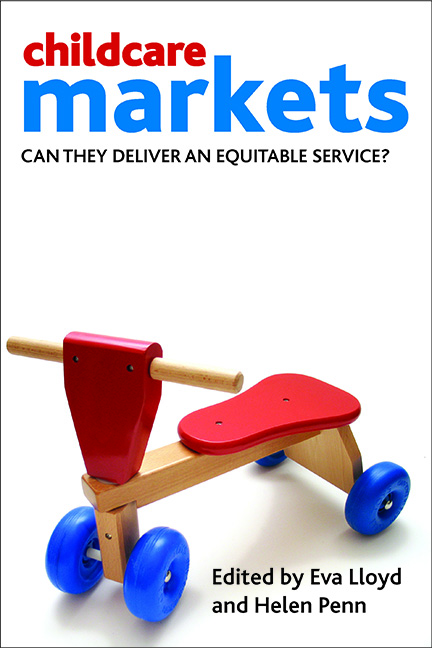seven - Publicly available and supported early education and care for all in Norway
Published online by Cambridge University Press: 01 September 2022
Summary
Introduction
In this chapter the authors describe the current situation and the recent development of the early childhood education and care (ECEC) sector in Norway, focusing on more recent history. In particular the chapter focuses on the introduction of a legal right to a place from the age of one in 2009 and the change of the financing schemes in 2011 which have supported the Norwegian childcare market. The authors have been working in ministries responsible for kindergartens since the 1970s. The references are mainly publicly available documents. Vollset (2011) describes the development of the Norwegian kindergarten sector as part of national family policy up to the transfer of the sector to the Ministry of Education and Research in 2006. The first Stoltenberg government, a red–green coalition, came to power in autumn 2005. This government aimed to see kindergartens as the first step in lifelong learning, to increase the number of places, to introduce equal treatment of municipal and non-municipal kindergartens in relation to public grants, to reduce parents’ fees and to introduce a legal right to a place for all children from the age of one (the Soria Moria Declaration 2005). This was a follow-up of a broad political settlement in the Norwegian Storting (parliament) in 2003.
‘Kindergarten’ (barnehage) is the common term for different types of early childhood education and care institutions. The first Act on Child Day Care Institutions came into force in 1975. The 1975 Norwegian Kindergarten Act with later amendments, is used to cover the age group 0–5 years; compulsory school age is 6. As paid parental leave is about one year, there is little need for care for children under the age of one. Since 2009 children from the age of approximately one year have a legal right to a place.
Kindergartens may offer full-time or part-time services. In addition there are ‘family kindergartens’ with small groups of children cared for by assistants with teaching guidance from a qualified preschool teacher or ‘open kindergartens’ where the children attend with one of their parents (or another person), who takes care of them under the leadership of a preschool teacher. Kindergartens may be non-municipal or municipal owned and run.
- Type
- Chapter
- Information
- Childcare MarketsCan They Deliver an Equitable Service?, pp. 115 - 130Publisher: Bristol University PressPrint publication year: 2012
- 1
- Cited by

